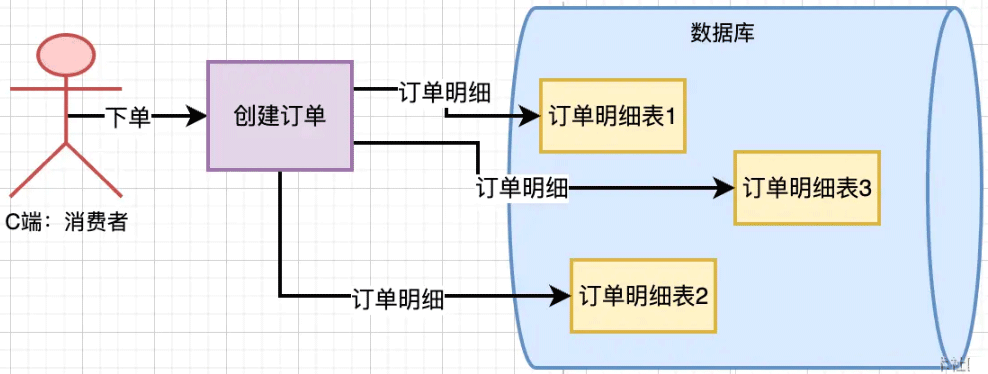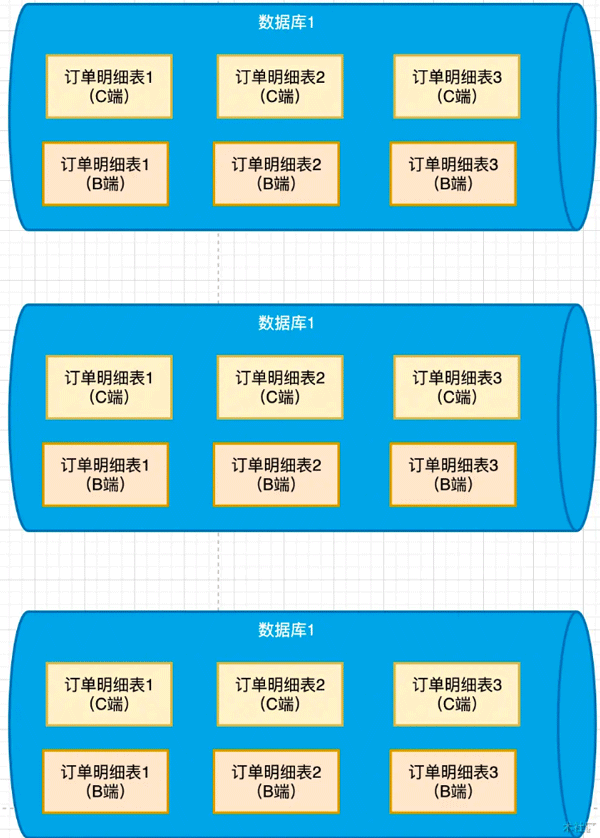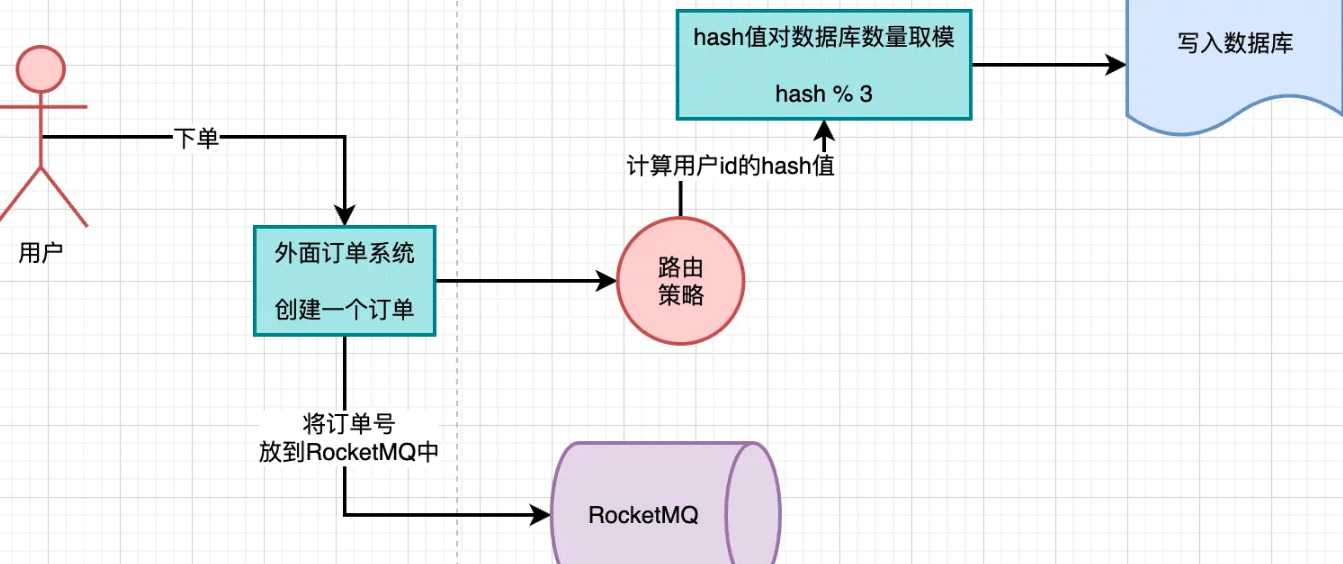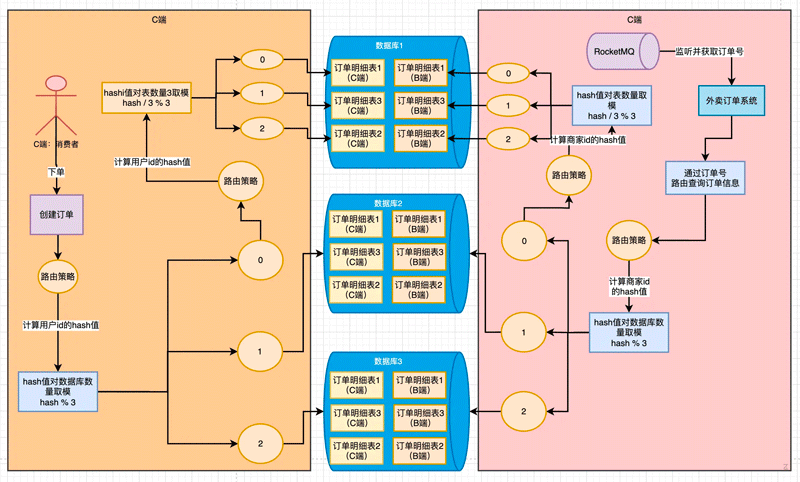 Database
Database
 Mysql Tutorial
Mysql Tutorial
 Example analysis of routing strategy design after MySQL database and table partitioning
Example analysis of routing strategy design after MySQL database and table partitioning
Example analysis of routing strategy design after MySQL database and table partitioning
Overview
The first problem that is designed after sharding the database and sharding the tables is how to select the routing key and how to route the key. Routing keys should exist and be unique in each table. The routing strategy should try to ensure that data is evenly distributed.
If you are archiving a large amount of data, you can choose time as the routing key. For example, using the creation time of the data as the routing key, create a table every month or quarter. Using time as the routing strategy after sharding databases and tables can achieve data archiving. The historical data access traffic is small, and the traffic will be sent to the latest database table.
You can also design its business-related routing key. This ensures that the resources of each database can well bear the traffic.
Support Scenarios
From the user's perspective, after the takeout order platform is divided into databases and tables, it needs to support real-time viewing of the status of the takeout orders ordered and tracking of order information. Merchants need to query order information, analyze the quality of dishes through orders, and make business decisions.
User Consumer = C-side Merchant Business = B-side

After the user places an order, the order may fall into different tables , you may need to query multiple tables when querying.

Routing strategy
If an order is randomly inserted into a table when creating an order, or you do not know which table it is inserted into, you need to query all orders when querying The table can ensure the accuracy of the query.
If there are certain rules when inserting an order, it will be inserted into the database according to this rule, and when querying, the corresponding rules will also be executed to query the corresponding table. This reduces the complexity of data operations. Both users and merchants can follow the same routing strategy when querying data, which can be achieved by designing a routing strategy.


Customer routing key
According to the routing strategy analysis in the previous section, you now need to select a routing key . The client allows the data of the same user id to be saved in a fixed table, so the user id can be selected as the routing key.
In the case of a single database, the user places an order, generates an order, uses the user id as the routing key, takes the hash value of the user_id and then takes the modulo of the number of tables to obtain the corresponding table that needs routing, and then data input.

#In the case of multiple databases and multiple tables, you need to find the corresponding database first and then find the corresponding table. Routing strategy for multiple databases and multiple tables: User places orders -> Generate orders - > Routing strategy: Modulo the number of databases based on the hash value of the user ID to find the corresponding database -> Divide the hash value of the user ID by the pair The number of tables, and then modulo the number of tables to find the corresponding table.

The key point of routing strategy design is to design according to the specific business scenario, and use the hash value modulo as the routing key that is more closely related to the user information
MERCHANT ROUTING KEY
A separate set of tables is designed for the merchant B side (C side and B side are independent).

The user's perspective uses user_id as the routing key, and the merchant's perspective uses the merchant's ID as the routing key. How do merchants route data through routing keys. When you place an order, Youhu sends the order number of your teammate to MQ. The merchant can consume this MQ, then obtain the order information based on the order number, and then insert the order information into the merchant's database table. The merchant's routing policy and the user's routing policy are the same.

Complete data flow diagram for client and merchant:

The above is the detailed content of Example analysis of routing strategy design after MySQL database and table partitioning. For more information, please follow other related articles on the PHP Chinese website!

Hot AI Tools

Undresser.AI Undress
AI-powered app for creating realistic nude photos

AI Clothes Remover
Online AI tool for removing clothes from photos.

Undress AI Tool
Undress images for free

Clothoff.io
AI clothes remover

Video Face Swap
Swap faces in any video effortlessly with our completely free AI face swap tool!

Hot Article

Hot Tools

Notepad++7.3.1
Easy-to-use and free code editor

SublimeText3 Chinese version
Chinese version, very easy to use

Zend Studio 13.0.1
Powerful PHP integrated development environment

Dreamweaver CS6
Visual web development tools

SublimeText3 Mac version
God-level code editing software (SublimeText3)

Hot Topics
 1389
1389
 52
52
 How to open phpmyadmin
Apr 10, 2025 pm 10:51 PM
How to open phpmyadmin
Apr 10, 2025 pm 10:51 PM
You can open phpMyAdmin through the following steps: 1. Log in to the website control panel; 2. Find and click the phpMyAdmin icon; 3. Enter MySQL credentials; 4. Click "Login".
 MySQL: An Introduction to the World's Most Popular Database
Apr 12, 2025 am 12:18 AM
MySQL: An Introduction to the World's Most Popular Database
Apr 12, 2025 am 12:18 AM
MySQL is an open source relational database management system, mainly used to store and retrieve data quickly and reliably. Its working principle includes client requests, query resolution, execution of queries and return results. Examples of usage include creating tables, inserting and querying data, and advanced features such as JOIN operations. Common errors involve SQL syntax, data types, and permissions, and optimization suggestions include the use of indexes, optimized queries, and partitioning of tables.
 How to use single threaded redis
Apr 10, 2025 pm 07:12 PM
How to use single threaded redis
Apr 10, 2025 pm 07:12 PM
Redis uses a single threaded architecture to provide high performance, simplicity, and consistency. It utilizes I/O multiplexing, event loops, non-blocking I/O, and shared memory to improve concurrency, but with limitations of concurrency limitations, single point of failure, and unsuitable for write-intensive workloads.
 MySQL's Place: Databases and Programming
Apr 13, 2025 am 12:18 AM
MySQL's Place: Databases and Programming
Apr 13, 2025 am 12:18 AM
MySQL's position in databases and programming is very important. It is an open source relational database management system that is widely used in various application scenarios. 1) MySQL provides efficient data storage, organization and retrieval functions, supporting Web, mobile and enterprise-level systems. 2) It uses a client-server architecture, supports multiple storage engines and index optimization. 3) Basic usages include creating tables and inserting data, and advanced usages involve multi-table JOINs and complex queries. 4) Frequently asked questions such as SQL syntax errors and performance issues can be debugged through the EXPLAIN command and slow query log. 5) Performance optimization methods include rational use of indexes, optimized query and use of caches. Best practices include using transactions and PreparedStatemen
 Why Use MySQL? Benefits and Advantages
Apr 12, 2025 am 12:17 AM
Why Use MySQL? Benefits and Advantages
Apr 12, 2025 am 12:17 AM
MySQL is chosen for its performance, reliability, ease of use, and community support. 1.MySQL provides efficient data storage and retrieval functions, supporting multiple data types and advanced query operations. 2. Adopt client-server architecture and multiple storage engines to support transaction and query optimization. 3. Easy to use, supports a variety of operating systems and programming languages. 4. Have strong community support and provide rich resources and solutions.
 How to connect to the database of apache
Apr 13, 2025 pm 01:03 PM
How to connect to the database of apache
Apr 13, 2025 pm 01:03 PM
Apache connects to a database requires the following steps: Install the database driver. Configure the web.xml file to create a connection pool. Create a JDBC data source and specify the connection settings. Use the JDBC API to access the database from Java code, including getting connections, creating statements, binding parameters, executing queries or updates, and processing results.
 How to view sql database error
Apr 10, 2025 pm 12:09 PM
How to view sql database error
Apr 10, 2025 pm 12:09 PM
The methods for viewing SQL database errors are: 1. View error messages directly; 2. Use SHOW ERRORS and SHOW WARNINGS commands; 3. Access the error log; 4. Use error codes to find the cause of the error; 5. Check the database connection and query syntax; 6. Use debugging tools.
 Monitor Redis Droplet with Redis Exporter Service
Apr 10, 2025 pm 01:36 PM
Monitor Redis Droplet with Redis Exporter Service
Apr 10, 2025 pm 01:36 PM
Effective monitoring of Redis databases is critical to maintaining optimal performance, identifying potential bottlenecks, and ensuring overall system reliability. Redis Exporter Service is a powerful utility designed to monitor Redis databases using Prometheus. This tutorial will guide you through the complete setup and configuration of Redis Exporter Service, ensuring you seamlessly build monitoring solutions. By studying this tutorial, you will achieve fully operational monitoring settings



